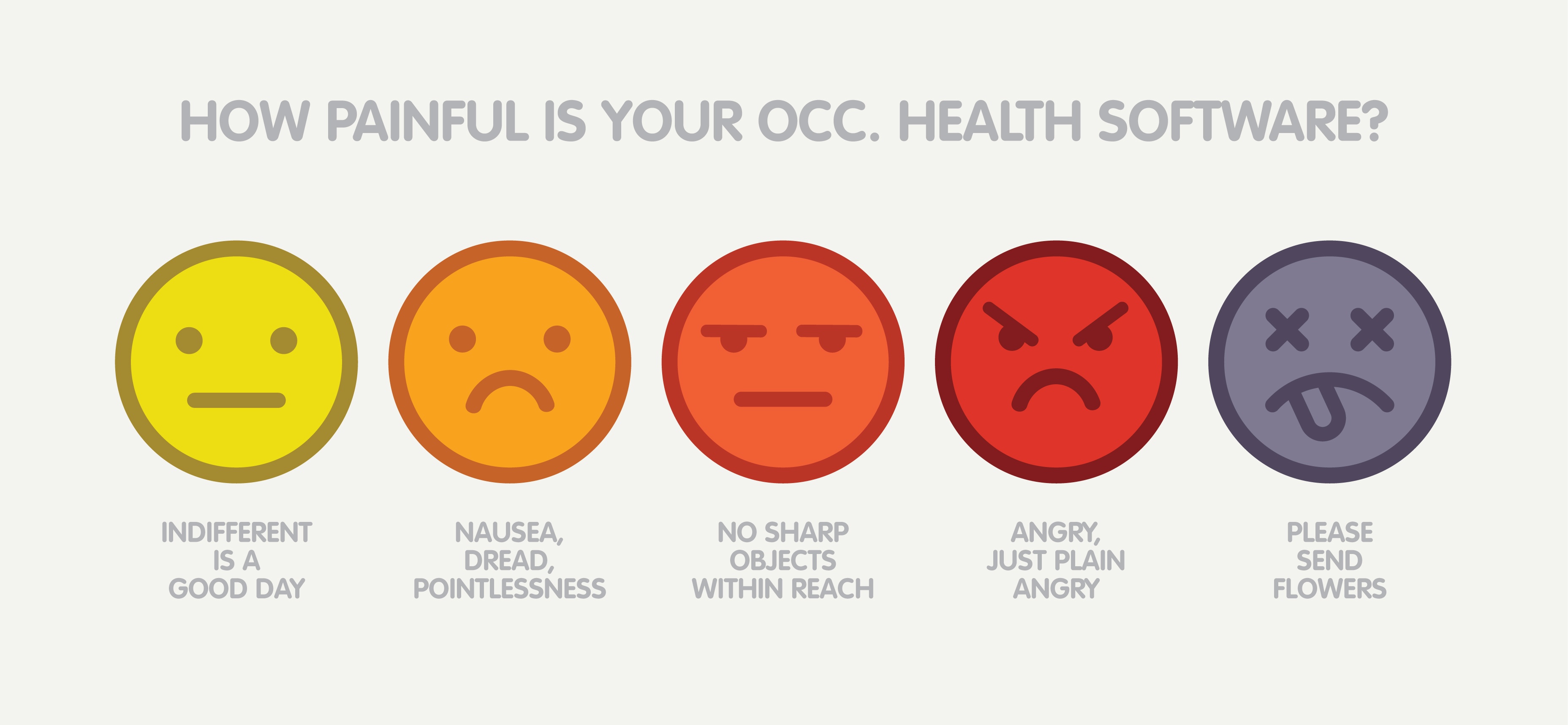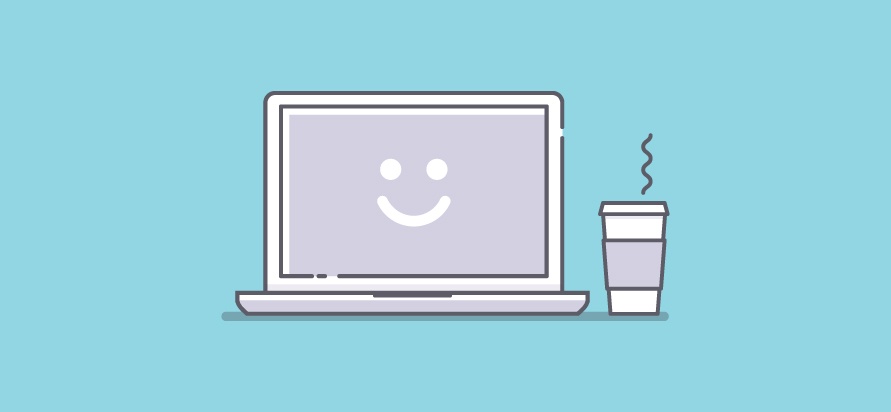Making the occ. health switch — acknowledge your pain
By Jeff Donnell on Oct 17, 2017 7:26:23 AM

(This is the second in a series of posts on changing occupational health IT solutions)
Let’s assume you find yourself using an occupational health IT solution that leaves something to be desired in your onsite employee clinic operation. If that something to be desired results in some minor inconveniences that can be addressed without serious discomfort, you might convince yourself to leave well enough alone. If, on the other hand, you are experiencing serious posterior pain, it might be time to make a switch.
A good place to start is by understanding, and acknowledging, your pain and the pain of those around you. Some of us live with our pain — suffering largely in silence and resigning ourselves to cope as best we can. Others of us are more vocal — making sure everyone is aware of our particular brand of distress. When the symptoms are prolonged and pronounced, the ranks of those in the vocal category tend to swell.
When it comes to deciding whether or not to look at other occ health IT solutions, the best path forward is to catalog your pain — identify the irritation that radiates from your current solution. Consider things like:
- Usability — is your current solution easy to use and intuitive, or is it click-heavy and hard to navigate?
- Functionality — can you do most of what you need to do with your current solution, or are you relying on a hodgepodge of applications, spreadsheets, home-grown solutions and even paper processes?
- Configuration — has your current solution been tuned to support your workflow and specific occupational health and compliance needs, or are you stuck with an inflexible application that forces you to do things “their way?”
- Support — does your current vendor provide strong service and support, routine upgrades and maintenance, new features and capabilities — or a poorly supported same old same old?
- Prioritization — as you identify your pain points, use the tried and true pain scale to rate the severity of each item — going from 0 (I’m alert, smiling and feeling no pain) to 10 (I’m moaning, crying and glad my employer operates on-site clinics because I need help now).
Dr. Richard Wittman, the Medical Director for Stanford University and SLAC National Accelerator Lab occupational health centers, presented at the recent 17th Annual Congress on On-Site Employee Health Clinics. During his presentation, which focused on Stanford’s experience in evaluating and selecting an occ health IT solution, Dr. Wittman shared Stanford’s approach to identifying their pain:
We started by identifying our primary pinch point — the biggest barrier to success we had with our existing medical record application. For us, it was the fact that everything was very, very manual.
It was easy for us to identify our number one pain point. We had a paper questionnaire that needed to be scanned by someone by hand, brought into the electronic record system, and indexed. Hopefully the scanned document was readable and legible, and it was then transcribed by a clinician because we were trying to add that information to the note itself. All these steps in the process made it pretty easy to say that we want a solution that makes all of this more automated. And this is one item in a wish list.
We combined the pain points and wishes of industrial hygiene, health and safety, the fit testers, the surveillance folks, and the people in our clinic ranging from the billing specialist to the administrative assistants. We created a list of well over 40 categories of desired improvements and well over 100 specific line items of either must have, nice to have, or pie in the sky goals. Assembling this list was fun, labor intensive, time consuming and extremely important. If you do not take the time to define what you need with your occupational health record, your objectives can get lost when you go through the process.
There is too much going on, and you need to have a checklist that can be used to vet each of the vendors.
If your current occ health software is click-intensive, laborious and is slowing you and your team down, admit the pain and calculate how much time is being wasted and might instead be saved.
If you are unable to generate meaningful reports without assembling data from various silos, document the effort involved and identify the information you simply cannot put your fingers on.
If your find yourself stymied as you try to move forward with other initiatives ranging from standardization across sites (or around the globe) to making meaningful advances in employee health and wellness, get that pain on paper.
You can download Dr. Whittman's proceedings document here.
You already feel the pain. By documenting it, you own it and can act on it — using it as fuel to overcome inertia and begin the process of moving to an occ health IT solution designed to alleviate the pain, enhance productivity, and contribute to a culture of health — for you and the employees you treat.
You May Also Like
These Related Stories

Making the occ health switch

3 ways to make your occupational flu program less chaotic
